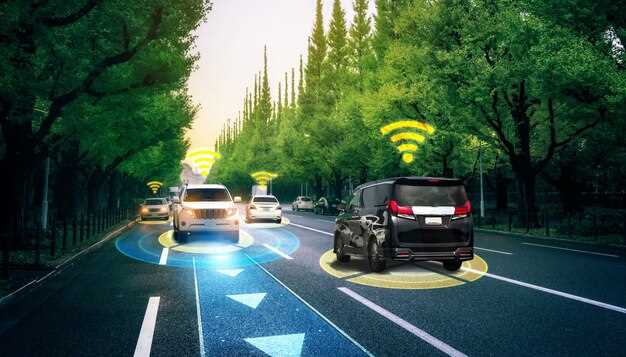
The advent of 5G technology is set to revolutionize the automotive industry by enhancing vehicle communication systems. As vehicles become more interconnected, the integration of 5G will facilitate real-time data transfer, creating a more efficient and safer driving experience. The capabilities of 5G pave the way for advanced vehicle-to-everything (V2X) communication, allowing cars to interact not only with each other but also with infrastructure, pedestrians, and the cloud.
By drastically reducing latency and increasing bandwidth, 5G supports the development of autonomous vehicles, which rely on seamless communication to navigate complex environments. This technology will enable automotive systems to process vast amounts of data quickly, enhancing decision-making capabilities and ultimately improving road safety. Furthermore, the integration of 5G in vehicle communication systems promises to enable innovative features such as real-time traffic updates, over-the-air software updates, and enhanced navigation services.
As we look to the future, the impact of 5G on the automotive sector will not be limited to passenger vehicles. Commercial vehicles, too, stand to benefit significantly from improved communication systems. Fleet management, remote diagnostics, and efficient routing are just a few areas that will leverage 5G capabilities to enhance operational efficiency and reduce costs. Thus, the next generation of automotive technology will be deeply intertwined with the seamless connectivity provided by 5G, marking a new era for vehicle communication systems.
Enhancing Vehicle-to-Everything (V2X) Communication with 5G

The integration of 5G technology into automotive systems represents a revolutionary advancement in Vehicle-to-Everything (V2X) communication. This enhanced connectivity paradigm allows vehicles to communicate not just with each other, but also with infrastructure, pedestrians, and various networks, significantly improving road safety and efficiency.
5G’s ultra-low latency and high data transfer rates are essential for real-time communication in automotive scenarios. With response times reduced to milliseconds, vehicles can quickly exchange critical information about traffic conditions, hazards, and navigation changes. This responsiveness is vital for advanced driver-assistance systems (ADAS) and autonomous driving functionalities, where every moment counts for decision-making.
Moreover, V2X communication powered by 5G can enable smarter traffic management systems. By connecting vehicles to traffic signals and other roadside infrastructure, it becomes possible to optimize traffic flow, reduce congestion, and minimize fuel consumption. This increased efficiency not only benefits individual drivers but also contributes to environmental sustainability.
Enhanced vehicle connectivity through 5G also opens the door for new applications, such as cooperative adaptive cruise control and platooning, where vehicles can travel in tight formations, reducing drag and improving fuel efficiency. These innovations can lead to significant cost savings for commercial fleets and better overall road usage.
Security is another key aspect of V2X communication that 5G can help to address. With advanced encryption and authentication mechanisms inherent in 5G networks, data transmitted between vehicles and their surroundings can be safeguarded against potential cyber threats. Ensuring secure communication channels is crucial for maintaining user trust in autonomous and connected vehicle systems.
In conclusion, the advent of 5G technology significantly enhances V2X communication, paving the way for safer, more efficient, and connected automotive ecosystems. As vehicles become increasingly integrated with smart infrastructure, the implications for traffic management, environmental impact, and user experience will be profound, reshaping the future of mobility.
Real-time Data Sharing Between Autonomous Vehicles Using 5G
The advent of 5G technology is set to revolutionize the automotive industry, particularly in the realm of autonomous vehicles. This ultra-fast connectivity facilitates seamless data exchange between vehicles, significantly enhancing their operational efficiency and safety.
Real-time data sharing among autonomous cars is critical for various functions, including navigation, collision avoidance, and traffic management. With 5G’s low latency and high bandwidth, vehicles can communicate trajectory information, sensor data, and even environmental conditions instantaneously. This immediacy allows for quicker decision-making, reducing response times to potential hazards.
For instance, consider a scenario where multiple autonomous vehicles share real-time information about a sudden road hazard. Through 5G connectivity, one vehicle can instantaneously alert others about the obstacle, allowing them to adjust their routes accordingly. Such interactions improve the overall safety of autonomous driving and contribute to a more collaborative driving environment.
Moreover, the integration of V2V (Vehicle-to-Vehicle) communication powered by 5G enables vehicles to form a connected network. This network enhances traffic flow through coordinated actions, minimizing congestion and optimizing fuel efficiency. It transforms the driving experience into a more informed and responsive journey.
In addition to safety and efficiency, this robust data-sharing capability fosters innovation in automotive applications. Developers can create new services that leverage real-time vehicle data, enhancing user experiences and potentially leading to smart city integrations. Such advancements align with the global shift towards automation and increased connectivity in transportation.
In conclusion, the implementation of 5G in autonomous vehicles not only improves real-time data sharing but also paves the way for a smarter, safer, and more efficient automotive future. As this technology continues to evolve, it holds the promise of transforming how we think about vehicle communication systems.
5G’s Role in Improving Traffic Management and Safety Features

The introduction of 5G technology is set to revolutionize communication systems in vehicles, significantly enhancing traffic management and safety features. With its high-speed connectivity and low latency, 5G enables real-time data transmission between vehicles, traffic signals, and control centers. This immediate communication allows for more efficient traffic flow and reduces congestion in urban areas.
By leveraging 5G, vehicles can access advanced traffic management systems that analyze real-time data from multiple sources. This data can include traffic density, accident reports, and road conditions, allowing the systems to dynamically adjust traffic signal timings and provide drivers with optimal routes. Enhanced connectivity ensures that vehicles receive timely updates, minimizing delays and improving overall travel efficiency.
Moreover, 5G’s capabilities are crucial for enhancing safety features in vehicles. Vehicle-to-Everything (V2X) communication, powered by 5G, facilitates interactions between vehicles, infrastructure, and pedestrians. This connectivity allows for the development of advanced driver-assistance systems (ADAS) that can alert drivers to potential hazards, such as pedestrians crossing the road or vehicles making sudden stops. These safety enhancements contribute to reducing accidents and increasing road safety for all users.
The integration of 5G technology will not only improve communication between vehicles and traffic management systems but also support connected and autonomous vehicles. These vehicles will rely heavily on accurate, real-time data to navigate complex environments safely. The reduced latency provided by 5G networks is essential for the timely processing of sensor data, enabling autonomous vehicles to make quick and safe driving decisions.
In summary, 5G plays a pivotal role in enhancing traffic management and safety features in the future of vehicle communication systems. By enabling seamless connectivity and real-time data sharing, 5G contributes to smarter traffic solutions and safer road environments, ultimately creating a more efficient and secure transportation ecosystem.





